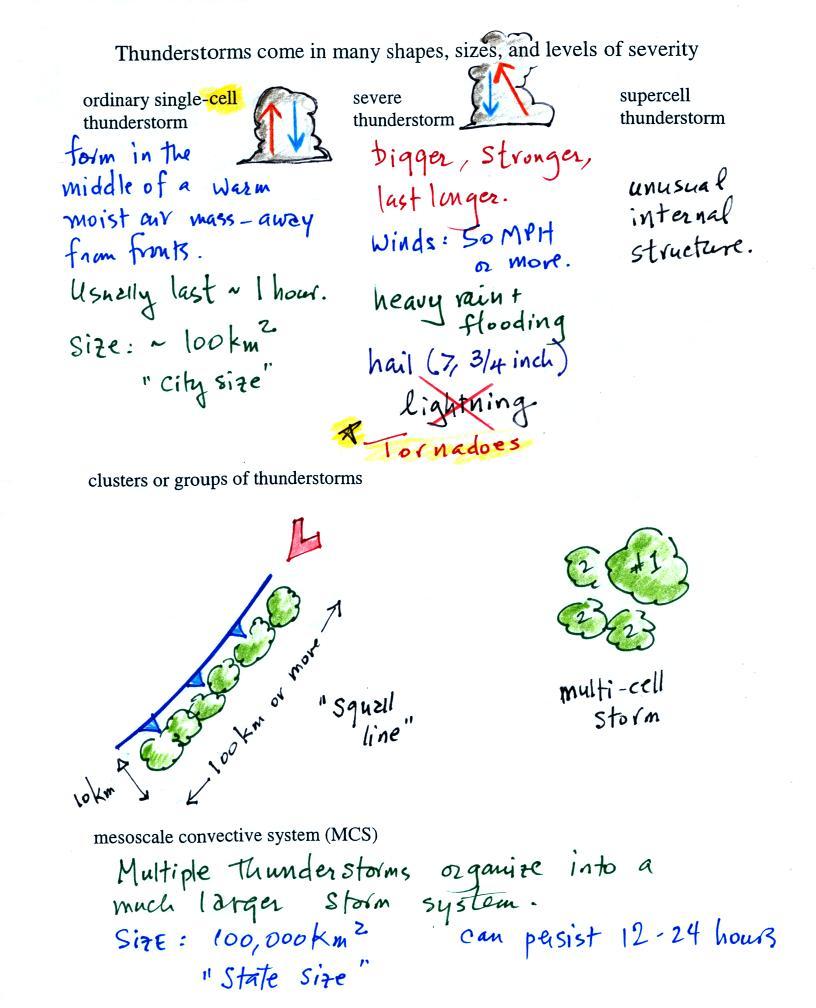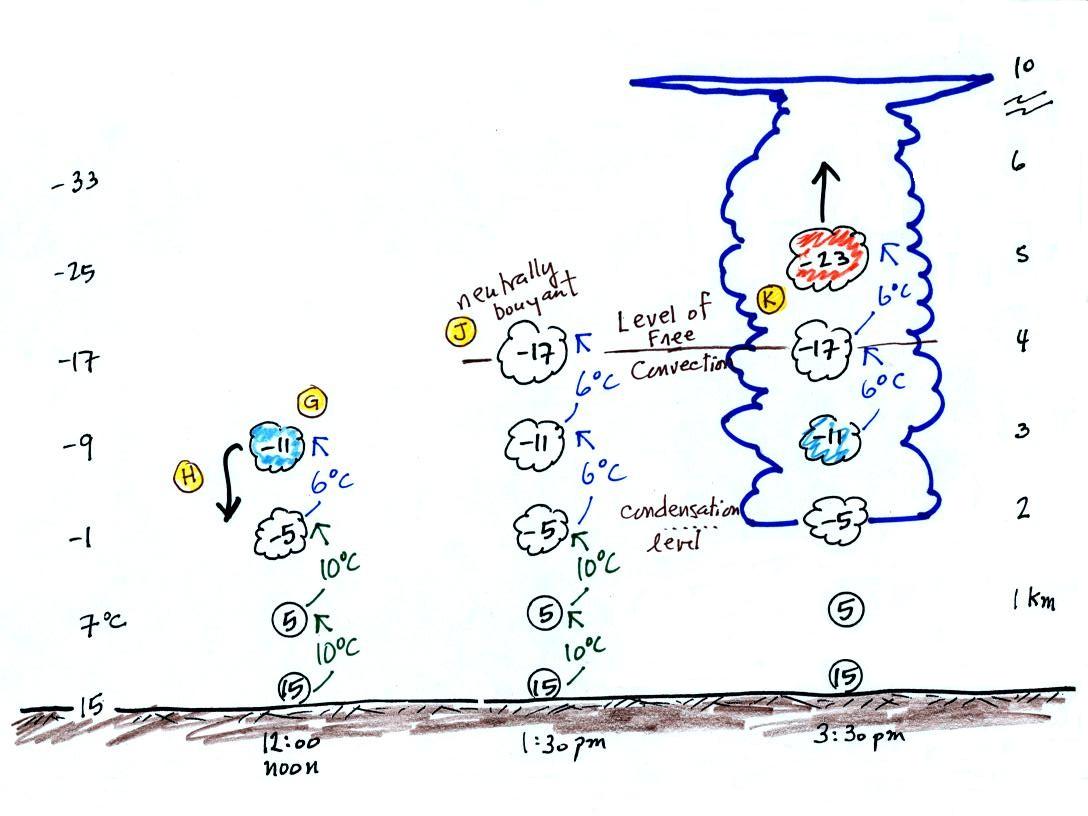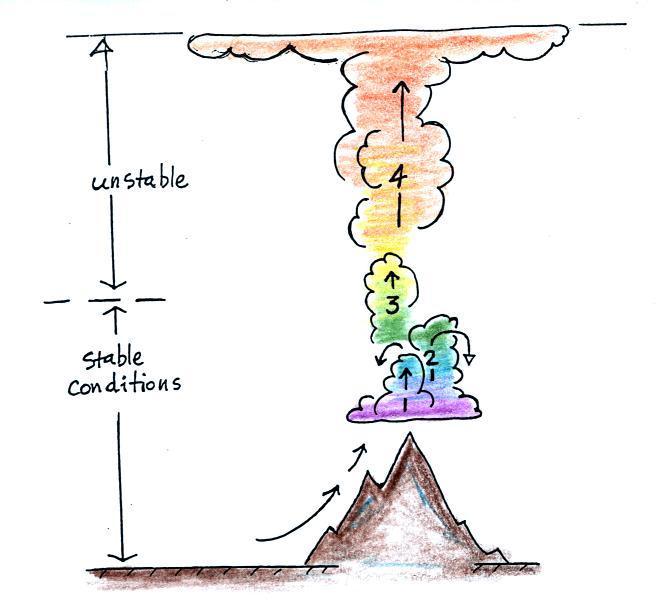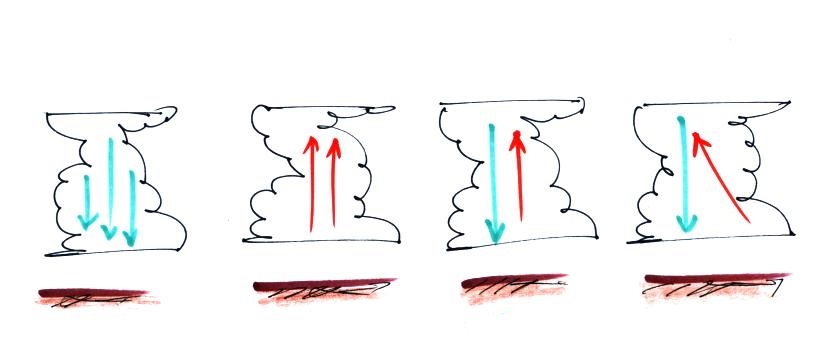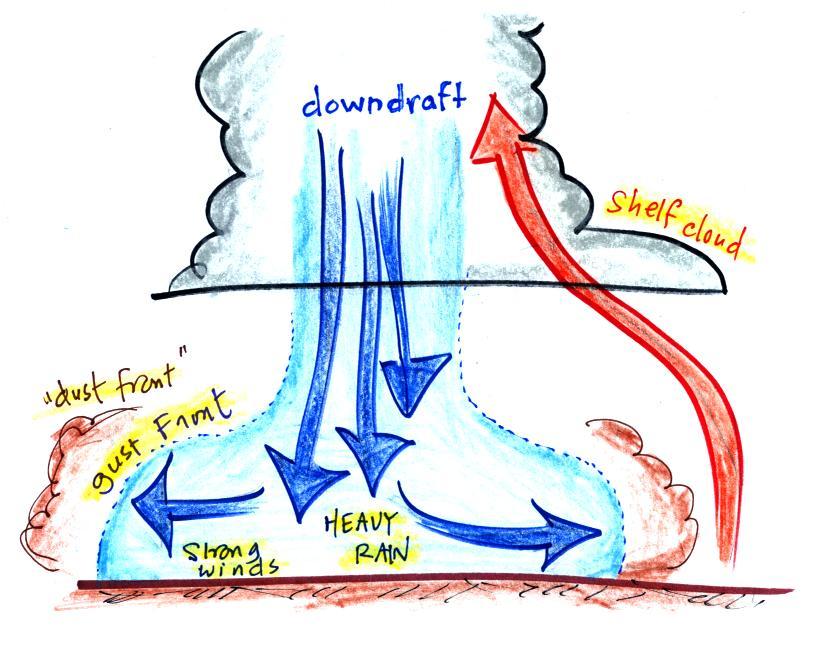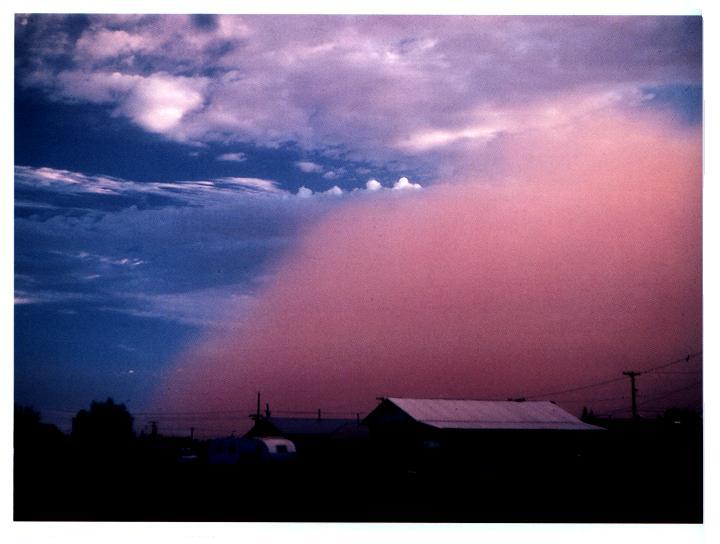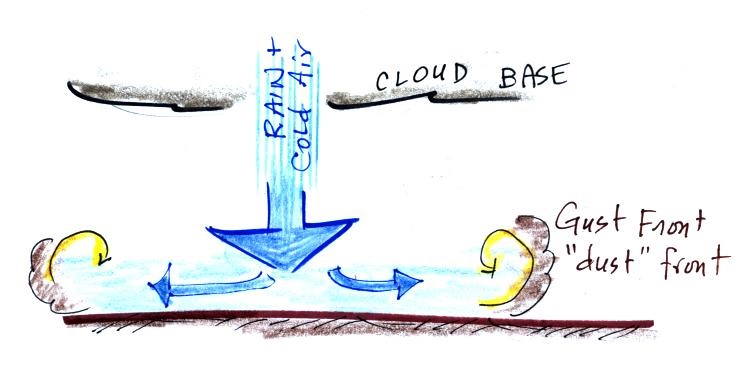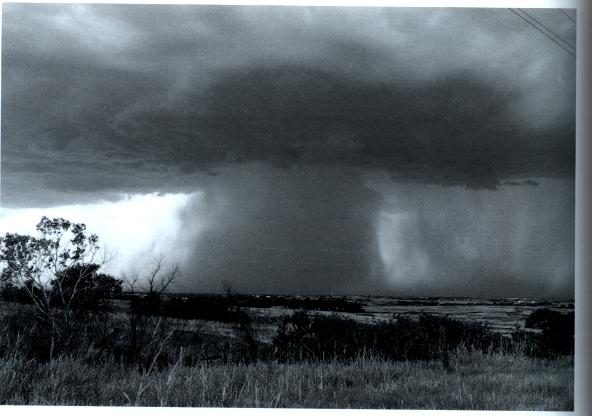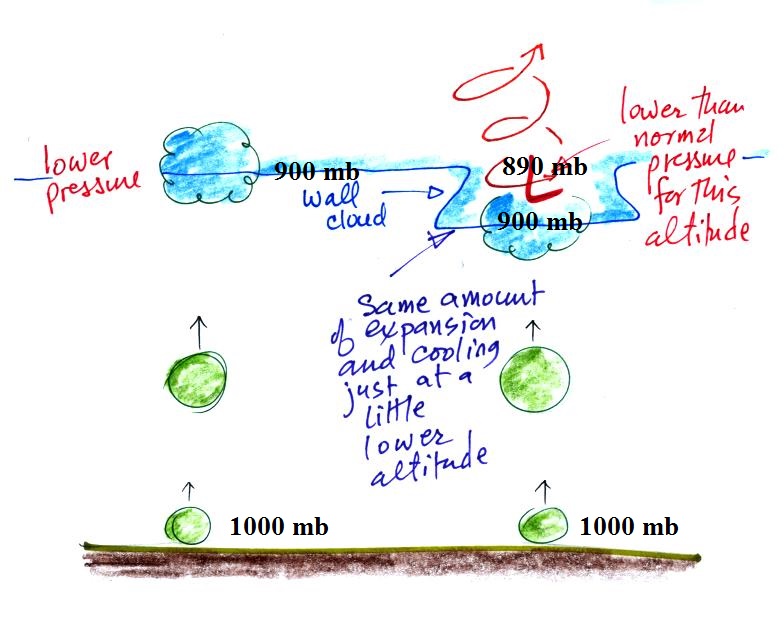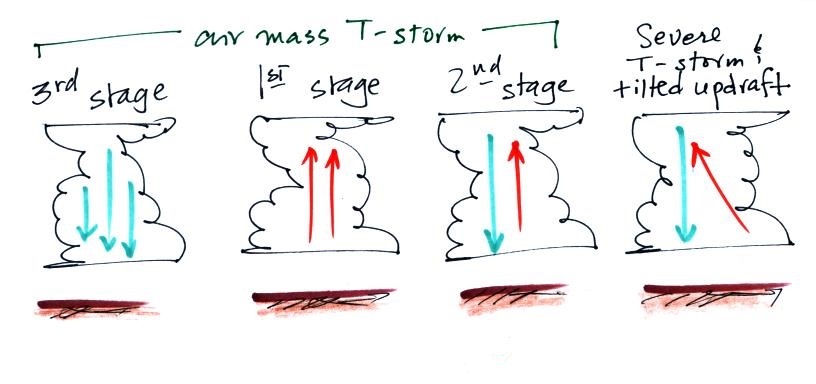Tuesday, April 21, 2015
Music this morning from Baka Beyond "Migrations",
"Ngombi"
and "Konti"
if I remember correctly.
Updated grade summaries were handed out in class today. They
do not include the most recent 1S1P reports on Fog; Satellite
Photographs of Clouds; and Rainbows, Mirages and the Green
Flash. The Fog reports have been graded and you will find
your total number of 1S1P pts earned so far this semester (the
number of your fog report should be 8 pts greater than the number
on your grade summary).
All but the revised Expt. #3 reports have been graded.
An Optional Assignment and the 1S1P worksheet on Atmospheric
Stability was collected today.
There will be one more 1S1P topic/Optional Assignment this
semester. It should become available by class on Thursday.
Here are the results from this semester's toilet bowl
flushing experiment and results from the past several semesters.
|
CW spin
|
CCW spin
|
Fall
2013
|
35
|
29
|
Spring
2014
|
24
|
17
|
Fall
2014
|
12
|
24
|
Spring 2015
|
17
|
26
|
Total
|
88
|
96
|
What should the answer be?
Equal numbers of CW and CCW spin because the Coriolis force
doesn't have an effect
Thunderstorms introduction
Thunderstorms come in different sizes and levels of
severity. We will mostly be concerned with ordinary
single-cell thunderstorms (also referred to as air mass
thunderstorms). They form in the middle of warm moist air,
away from fronts. Most summer thunderstorms in Tucson are
this type. An air mass thunderstorm has a vertical
updraft. A cell is just a term that means a single
thunderstorm "unit" (a storm with an updraft and a downdraft).
See image #9 in the gallery mentioned below.
Tilted updrafts are found in severe and supercell
thunderstorms. As we shall see this allows those storms to
get bigger, stronger, and last longer. The
tilted updraft will sometimes begin to rotate. We'll see
this produces an interesting cloud feature called a wall cloud and
maybe tornadoes. Supercell thunderstorms have a
complex internal structure; we'll watch a short video at
some point that shows a computer simulation of the complex air
motions inside a supercell thunderstorm. In class
I showed a gallery of
storm images that were taken by Mike Olbinski. The 1st
and 5th images in the gallery show the base of a supercell
thunderstorms photographed in Texas with wall clouds.
There are additional images further down in the gallery.
We won't spend anytime discussing mesoscale convective systems
except to say that they are a much larger storm system. They
can cover a large portion of a state. They move slowly and
often thunderstorm activity can persist for much of a day.
Occasionally in the summer in Tucson we'll have activity that
lasts throughout the night. This is often caused by an MCS.
The buildup to an air mass thunderstorm
The following somewhat tedious material was intended to prepare
you to better appreciate a time lapse video movie of a
thunderstorm developing over the Catalina mountains. I don't
expect you to remember all of the details given below. The
figures below are more carefully drawn versions of what was done
in class.
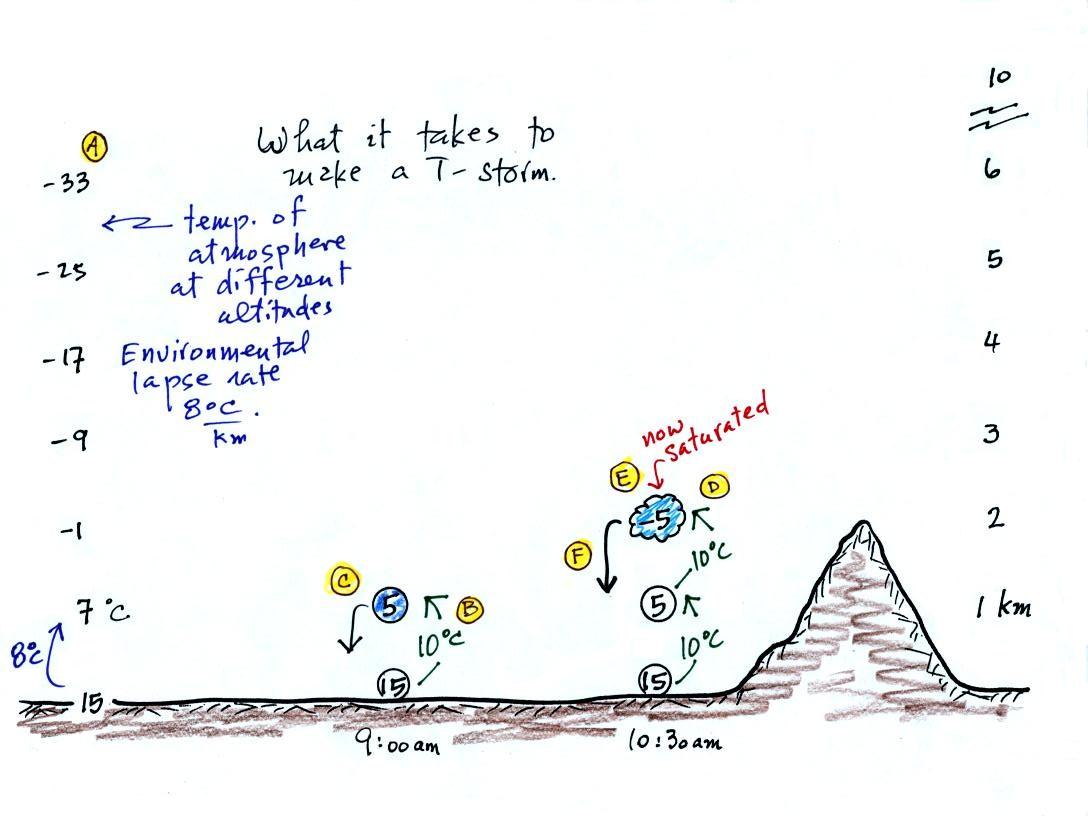
Refer back and forth between the lettered points in the
figure above and the commentary below.
The numbers in Column A
show the temperature of the air in the atmosphere at various
altitudes above the ground (note the altitude scale on the right
edge of the figure). On this particular day the air
temperature was decreasing at a rate of 8 C per kilometer.
This rate of decrease is referred to as the environmental lapse
rate (lapse rate just means rate of decrease with altitude).
Temperature could decrease more quickly than shown here or less
rapidly. Temperature in the atmosphere can even increase
with increasing altitude (a temperature inversion).
At Point B, some
of the surface air is put into an imaginary container, a
parcel. Then a meteorological process of some kind lifts the
air to 1 km altitude (in Arizona in the summer, sunlight heats the
ground and air in contact with the ground, the warm air becomes
buoyant - that's called free convection). The rising air
will expand and cool as it is rising. Unsaturated air (RH
is less than 100%) cools at a rate of 10 C per
kilometer. So the 15 C surface air will have a temperature
of 5 C once it arrives at 1 km altitude.
Early in the morning "Mother Nature" is only able to lift the
parcel to 1 km and "then lets go." At Point C note that the
air inside the parcel is slightly colder than the air outside (5 C
inside versus 7 C outside). The air inside the parcel will
be denser than the air outside and the parcel will sink back to
the ground. You can't see this because the air is clear,
invisible.
By 10:30 am the parcel is being lifted to 2 km as shown at Point D. It is
still cooling 10 C for every kilometer of altitude gain. At
2 km, at Point E
the air has cooled to its dew point temperature, the
relative humidity is now 100%, and a cloud has formed.
Notice at Point F,
the air in the parcel or in the cloud (-5 C) is still colder and
denser than the surrounding air (-1 C), so the air will sink back
to the ground and the cloud will disappear. Still no
thunderstorm at this point.
At noon, the air is lifted to 3 km. Because the air
became saturated at 2 km, it will cool at a different rate between
2 and 3 kilometers altitude. It cools at a rate of 6 C/km
instead of 10 C/km. The saturated air cools more slowly
because release of latent heat during condensation offsets some of
the cooling due to expansion. The air that arrives at 3km, Point H, is again
still colder than the surrounding air and will sink back down to
the surface.
By 1:30 pm the air is getting high enough that it has become
neutrally buoyant, it has the same temperature and density as the
air around it (-17 C inside and -17 C outside). This is
called the level of free convection, Point J in the figure.
If you can, somehow or another, lift air above the level
of free convection it will find itself warmer and less dense than
the surrounding air as shown at Point K and will float upward to
the top of the troposphere on its own. This is really the beginning
of a thunderstorm. The thunderstorm will grow
upward until it reaches very stable air at the bottom of the
stratosphere.
This was followed by a Time
lapse video showing a day's worth of work leading eventually
to the development of a thunderstorm.
Thunderstorm
life cycle
The events leading up to the initiation of a summer air mass
thunderstorm are summarized in the figure below.
It takes some effort and often a good
part of the day before a thunderstorm forms. The air must
be lifted to just above the level of free convection (the dotted
line at middle left in the picture). Once air is lifted
above the level of free convection it finds itself warmer and
less dense that the air around it and floats upward on its
own. I've tried to show this with
colors below. Cool colors below the level of free
convection because the air in the lifted parcel is colder and
denser than its surroundings. Warm colors above the
dotted line indicate parcel air that is warmer and less dense
than the surroundings. Once the parcel is lifted above
the level of free convection it becomes buoyant; this is
the moment at which the air mass thunderstorm begins.
Once thunderstorm
gets above the level of free convection it goes through a
3-stage life cycle
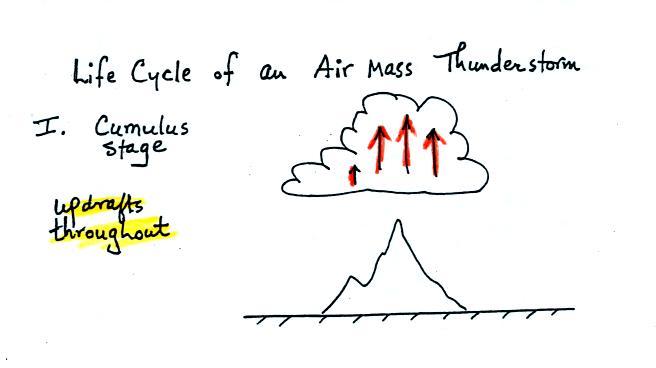
In
the first stage you would only find updrafts inside the cloud
(that's all you need to know about this stage, you don't even
need to remember the name of the stage).

Once precipitation has formed and grown to a certain size, it
will begin to fall and drag air downward with it. This
is the beginning of the mature stage where you find both an
updraft and a downdraft inside the cloud. The falling
precipitation will also pull in dry air from outside the
thunderstorm (this is called entrainment). Precipitation
will mix with this drier air and evaporate. The
evaporation will strengthen the downdraft (the evaporation
cools the air and makes it more dense).
The thunderstorm is strongest in the mature stage. This
is when the heaviest rain, hail, strongest winds, and most of
the lightning occur.
Eventually the downdraft spreads
horizontally throughout the inside of the cloud and begins to
interfere with the updraft. This marks the beginning of
the end for this thunderstorm.
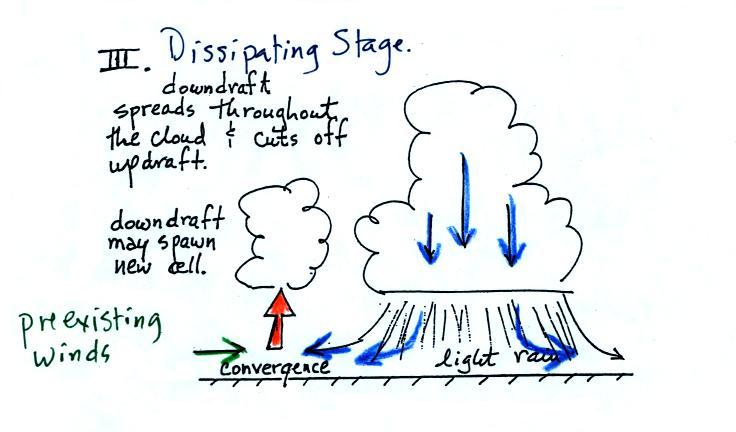
The downdraft
eventually fills the interior of the cloud. In this
dissipating stage you would only find weak downdrafts
throughout the cloud.
Note how the winds from one
thunderstorm can cause a region of convergence on one side of
the original storm and can lead to the development of new
storms. Preexisting winds refers to winds that were
blowing before the thunderstorm formed. Convergence
between the prexisting and the thunderstorm downdraft winds
creates rising air that can initiate a new thunderstorm.
Here's a sketch of 4 thunderstorm clouds and a question: what
information could you add to each picture.
You should be able to say something about the first
three. The 4th cloud might be a bit of a puzzle.
You'll find the answer to the question at the end of today's
notes.
Gust fronts and the dust storms (haboobs) they can
produce
The picture below shows some of the features at the base
of a thunderstorm.
The cold downdraft air spilling out of a
thunderstorm hits the ground and begins to move outward from underneath the thunderstorm. The
leading edge of this outward moving air is called a gust
front. You can think of it as a dust front because the
gust front winds often stir up a lot of dust here in the desert
southwest (see below). There are several very nice
examples in Mike
Olbinski's Storm Gallery.
The gust front in this picture
(taken near Winslow,
Az) is moving from the right to the left.
Visibility in the dust cloud can drop to near zero which
makes this a serious
hazard to automobile traffic. Dust storms like this
are sometimes called "haboobs".
There's lots of video on YouTube of an impressive dust storm a
few summers ago. Here's an example
from Gilbert Arizona (July 5, 2011). You
can see day literally turn to night when the dust cloud is
overhead (start about 1:20). Here's another video of the same storm
from a different location (South Mountain). There are also
several time lapse videos on Mike
Olbinski's Time Lapse Gallery page.
Here's a video
from a summer 2012 dust storm captured from the front window
of a vehicle that drove through the storm. Check the last
minute or two of the video where visibility drops to near zero
(about 5:00 minutes into the video). Officials recommend
that you drive off the highway under conditions like this, turn
off your lights, and take your foot off the brake so that your
brake lights are not on (otherwise someone might follow your
lights thinking you're still on the highway and run into you from
behind).
Microbursts
Thunderstorm downdraft winds can be a serious hazard whether they
stir up dust or not.
A narrow intense
thunderstorm downdraft is called a microburst. At the
ground microburst winds will sometimes reach 100 MPH or more
(over a limited area). As we will see most tornadoes have
winds of 100 MPH or less. Microburst winds can damage
homes (especially mobile homes that aren't tied to the ground),
uproot trees, and seem to blow over a line of electric power
poles at some point every summer in Tucson. Wind damage from a microburst is
often incorrectly attributed to a tornado.
Microbursts
are a serious threat to aircraft especially when they are close
to the ground during landing or takeoff. A pilot coming in
for a landing and encountering headwinds at Point 1 in the
figure below might cut back on the power. Very quickly the
plane would lose the headwinds (Point 2) and then encounter
tailwinds (Point 3). The plane would lose lift and might
lose altitude so quickly that it would crash into the ground
before corrective action could be taken. Microburst
associated wind shear was largely responsible for the crash of Delta
Airlines Flight 191 while landing at the Dallas Fort Worth
airport on Aug. 2, 1985 (caution some of the links at the end of
the article contain audio of actual cockpit communications).
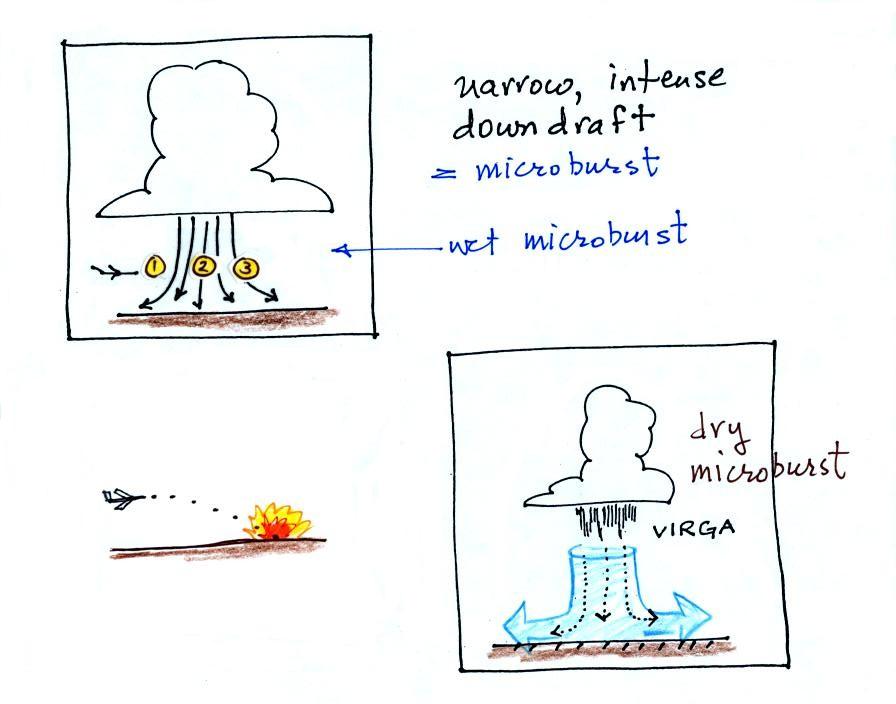
Falling rain could
warn of a wet microburst (see photo below). In other cases, dangerous dry microburst
winds might be invisible (the virga,
evaporating rain, will cool the air, make the air more dense,
and strengthen the downdraft winds).
Here are a couple of microburst
videos. The first video
was taken in the heavy rain and strong winds under a
thunderstorm in the microburst. You'll see a power pole
snapped in half by the microburst winds at about 2:26 into the
video. I showed portions of a 2nd longer
video in class. It was taken in or near San Tan,
Arizona. The microburst doesn't look too impressive at the
start of the footage but the storm winds soon get pretty violent
(at about the 3:15 point in the video) and blew over or uprooted
several trees (6:45 into the video).
Severe thunderstorms, wind shear, mesocyclones, and
wall clouds
Next I wanted to look at some of the conditions
that can lead to severe thunderstorm formation and some of the
characteristics of these storms. Severe thunderstorms last
longer, grow bigger, and become stronger than ordinary air mass
thunderstorms. They can also produce tornadoes.
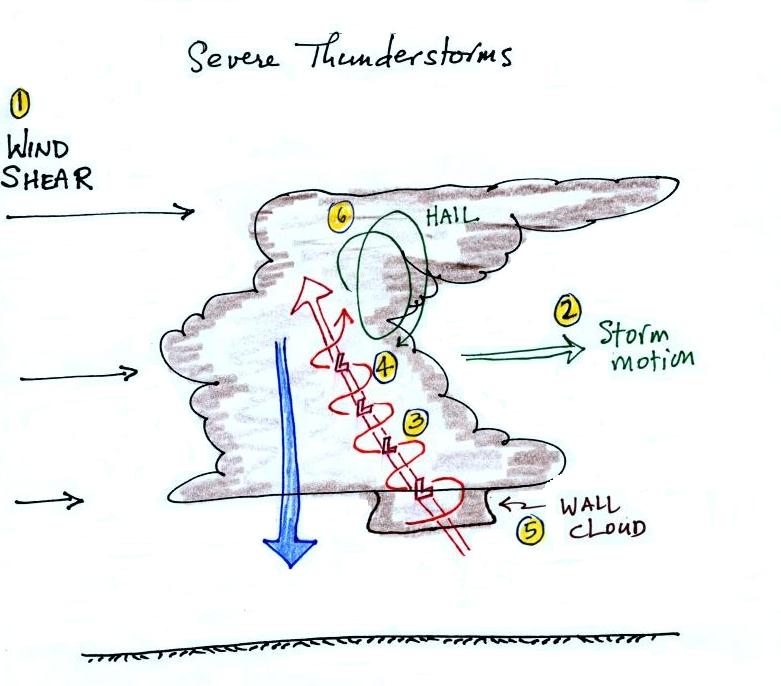
Severe storms are more likely to form
when there is vertical wind shear (the picture above is on p.
154a in the ClassNotes). Wind shear (Point 1) is changing wind
direction and/or wind speed with distance. In the case
shown above, the wind speed is increasing with increasing
altitude, this is vertical wind shear.
A thunderstorm that forms in this kind of an environment will move at an average of
the speeds at the top and bottom of the cloud (pt. 2).
The thunderstorm will move to the right more rapidly than the
air at the ground which is where the updraft begins.
Rising air that is situated at the front bottom edge of the
thunderstorm will find itself at the back edge of the storm
when it reaches the top of the cloud.
This produces a tilted updraft (pt.
3). The downdraft is situated at the back of the
ground. The updraft is continually moving to the right
and staying away from the downdraft. The updraft and
downdraft coexist and do not "get in each others way."
If you remember in air mass thunderstorms, the downdraft gets
in the way of the updraft and leads to dissipation of the
storm.
Sometimes
the tilted updraft will begin to rotate. A rotating
updraft is called a mesocyclone (pt. 4). Meso refers to medium size
(thunderstorm size) and cyclone means winds spinning around
low pressure (tornadoes are sometimes called cyclones).
Low pressure in the core of the mesocyclone
creates an inward pointing pressure gradient force needed to
keep the updraft winds spinning in circular path.
The cloud that extends below the cloud
base and surrounds the mesocyclone
is called a wall cloud
(pt. 5). The largest and strongest tornadoes will
generally come from the wall cloud.
Note (pt. 6) that a tilted updraft also
provides a way of keeping growing hailstones inside the
cloud. Hailstones get carried up toward the top of the
cloud where they begin to fall. But
they then fall back into the strong core of the updraft and
get carried back up toward the top of the cloud.
Here is a link to an exceptional time lapse video
of a supercell thunderstorm in Texas (from Mike Olbinski).
Click on Supercell near Booker, Tx at the top of the list on the
left side of the page. In time lapse you can see the
rotation of the wall cloud. If you watch closely you'll see
another interesting feature: moisture from air in the downdraft
that reaches the ground is drawn into the thunderstorm updraft
(starting at about 0:38 in the video up until the end of the first
segment of video). As it moves upward cloud begins to
form.
This is as far as we got today.
I'll leave the picture below which finishes the section on
thunderstorms.
It is worth trying to understand
why the wall cloud surrounds the mesocyclone and why it extends
below the rest of the cloud.
Clouds form when
air rises, expands, and cools as shown above at
left. The rising air expands because it is moving
into lower pressure surroundings at higher altitude.
Only when the air has risen high enough, moved into low
enough pressure, expanded and cooled enough will a cloud
form. Just for the purposes of illustration we'll
assume that once air has traveled from the ground to 900
mb pressure it will have expanded and cooled enough for a
cloud to form.
Air in the center of the rotating updraft has a little
lower pressure than the air surrounding it at the same
altitude. I've assumed that the pressure in the middle
of the mesocyclone at cloud base altitude is 890 mb. In
this part of the picture 900 mb pressure is found a little bit
closer to the ground. Thus air that rises into the
rotating updraft doesn't have to go as high before it
encounters 900 mb pressure and has expanded and cooled enough
to form a cloud.
Here's the answer to the question
about thunderstorm features embedded in today's notes:
